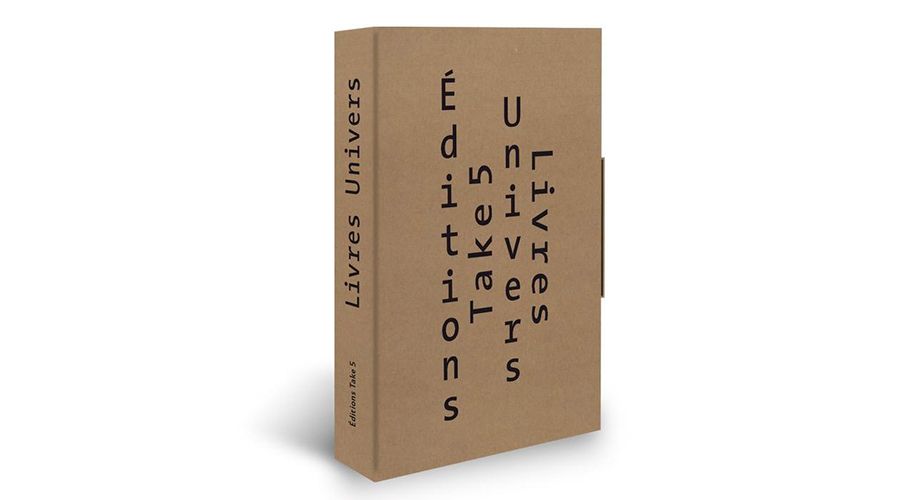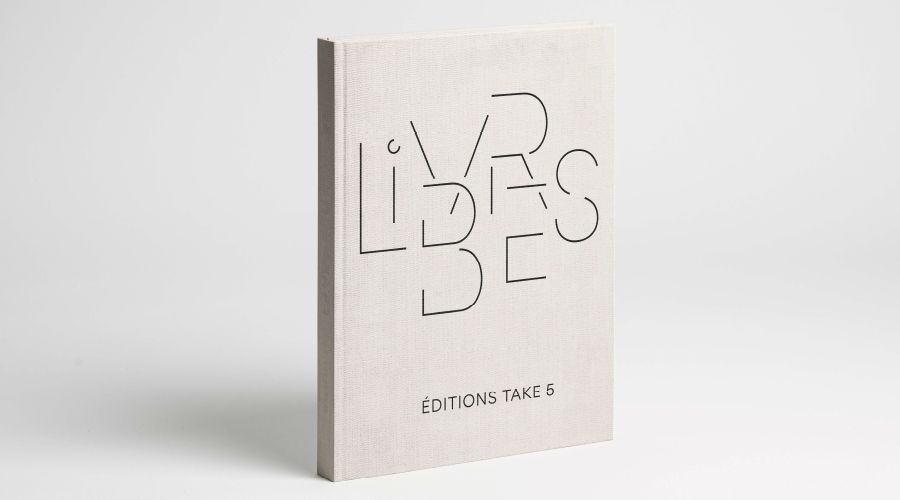Editions Take 5 by Céline Fribourg
Everything in the world exists in order to be turned into a book.
Stéphane Mallarmé
A book’s always a breath, a rhythm, a providence.
Zeno Bianu, Satori Express
I created éditions Take 5 in order to materialise, in books conceived with passion, innovative collaborations between major contemporary talents in art, literature, design and graphics. I invite artists, writers, scientists and designers to participate in this enterprise. The links we forge between different works are meant to enrich our respective worlds, and those of our readers.
Unifying in a single project diverse forms of experience and
sensibility with regard to a new work –this is the humanistic challenge assumed by éditions Take 5. Each publication is an invitation to enter into a collective universe, a dynamic representation of a new, living collaboration and reflexion.
The artists’ book is one of the many forms of expression that
have been explored by artists, like painting, sculpture, engraving, performance and installations. Its intimate format means that it provides a way of looking at an oeuvre in its most profound essence. It is not an “art book“, or a book about art. It is a work of art. It is also a space on the human scale that articulates the signification of words, along with the visual, tactile and conceptual power of art, onto the aesthetics of the graphic form and the sensuality of paper, using a variety of printing techniques. All of this contributes to generating a unique emotion in the reader –at once intellectual, affective and sensorial.
Each book is minutely orchestrated and thought through.
The genesis and development of these books involves lengthy
discussions between the participants, sometimes leading in unexpected directions. Each of the works can be appreciated separately, but they can also, throughout the editorial process, resonate polyphonically in a free-form, productive dynamic. The aim of éditions Take 5, with this orchestration of confrontations and encounters between images, words, forms and materials, is to create transdisciplinary relations, connections and affinities between ideas, emotions and feelings in a nascent, open-ended discussion, unfettered by any rigid signifying intention.
Each book embodies a labile, indeterminate form of communication
centred on a theme chosen by the publisher in agreement with the different participants, who, though their cultural backgrounds may be diverse, are eager to communicate. And in order to promote dialogue between them, the format combines words and images in a novel way, as a sensory catalyst for inductive correspondences.
Éditions Take 5 publishes just thirty copies each of works that bring together original, signed photographic prints and specially-written texts. There is a range of artistic expression – painting, photography, video and film –and the texts may be literary, scientific, or poetic. Graphic designers work on a project specific basis, not confining themselves to conventional methods but exploring open-ended ideas. The traycases of the books are conceived as sculptures that represent the symbiotic “epidermis” of their content.
Ancestral artisanal techniques are deployed, as are the most
innovative crafts. Particular attention is paid to the materials used –wood, porcelain, resin, glass, composites– and to the successive stages of the production process.
A given publication may have contributors from a number of
countries, working in different languages for maximal international exposure, as an expression of the multicultural approach that characterises éditions Take 5.
Over the last twenty-five years, twenty-five books have been
published by éditions Take 5, one of them jointly with MoMA,
in 2013, and éditions Coromandel, from 1995 till 2002 (directed
by Céline Friboug, Alexis Fabry et Gregory Leroy). They have been
acquired by, and are displayed in, leading museums and institutions.
Céline Fribourg

Éditions TAKE 5 present
their new catalog:
download pdf
This email address is being protected from spambots. You need JavaScript enabled to view it.
















 FR
FR